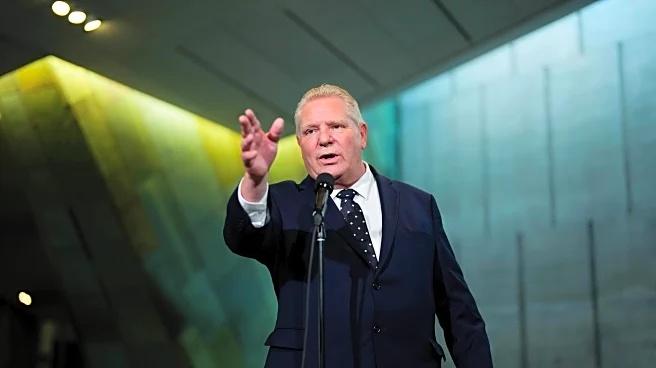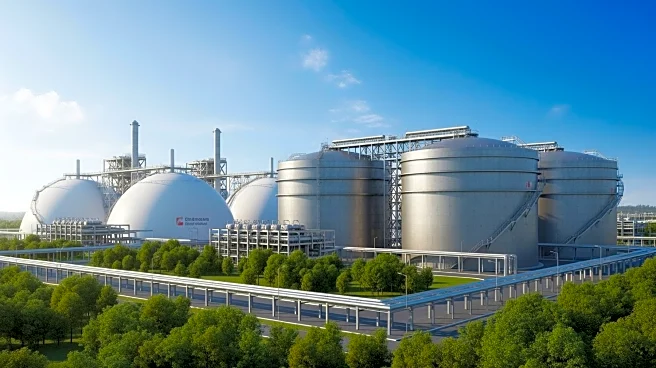What's Happening?
The Trump administration has announced an extension of tariff relief programs for the U.S. auto industry, providing a significant win for automakers who have lobbied against the impact of high import duties.
The relief extends a tariff offset program from two to five years, aimed at preventing tariffs on automobile and auto parts from stacking up. This move is part of a broader strategy to expand domestic vehicle production and ensure high-paying jobs for American workers. The administration also plans to impose new tariffs on heavy trucks and buses, with imports from Mexico and Canada receiving favorable treatment under the USMCA.
Why It's Important?
The extension of tariff relief is crucial for the U.S. auto industry, which has been facing significant financial pressures due to high import duties. By preventing tariffs from stacking up, the relief helps automakers manage costs and maintain competitiveness. The move also underscores the administration's focus on boosting domestic production and supporting American jobs. However, the imposition of new tariffs on heavy trucks and buses could have mixed effects, potentially increasing costs for certain sectors while benefiting others. The situation highlights the complexities of trade policy and its impact on different industries.
What's Next?
The auto industry will continue to monitor the implementation of the new tariffs and the impact of the extended relief program. Automakers may need to adjust their strategies to navigate the evolving trade landscape and maintain competitiveness. The administration's ongoing trade negotiations and policy decisions will also play a role in shaping the future of the industry. Stakeholders will be closely watching these developments, as they could have significant implications for the U.S. economy and global trade dynamics.













